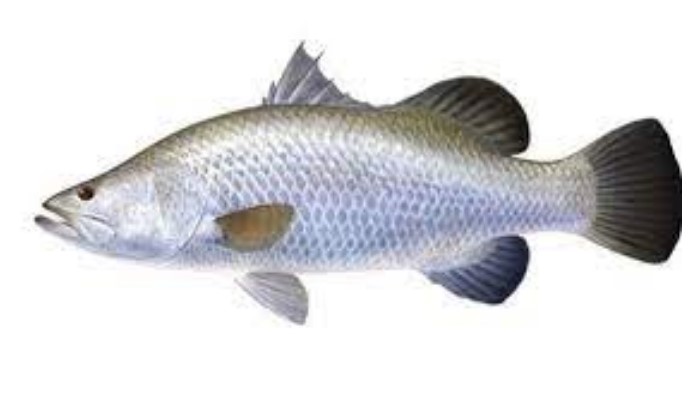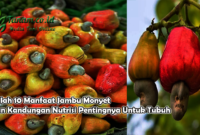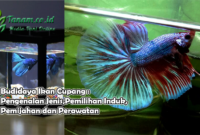Contents
I. Introduction
Definition of white snapper aquaculture
Importance and growth of white snapper aquaculture industry
Overview of the article content tanam.co.id
II. Understanding White Snapper
Introduction to white snapper fish species
Physical characteristics and habitat
Life cycle and reproductive behavior
III. White Snapper Aquaculture: An Overview
What is aquaculture?
History and development of white snapper aquaculture
Benefits and challenges of white snapper aquaculture
IV. White Snapper Aquaculture Techniques
Selection and preparation of aquaculture sites
Broodstock management and breeding techniques
Larval rearing and nursery systems
Grow-out systems for white snapper
Feeding and nutrition requirements
V. Water Quality Management
Importance of water quality in white snapper aquaculture
Parameters to monitor and maintain
Best practices for water quality management
VI. Disease Management and Biosecurity
Common diseases affecting white snapper
Preventive measures and biosecurity protocols
Diagnosis and treatment options
VII. Market Demand and Commercial Potential
Global market trends for white snapper
Value chain and market opportunities
Challenges and considerations for commercial success
VIII. Environmental Sustainability
Environmental impacts of white snapper aquaculture
Sustainable practices and certification programs
Efforts towards responsible aquaculture
IX. Regulations and Legal Framework
National and international regulations for white snapper aquaculture
Licensing and permit requirements
Compliance and enforcement measures
X. Frequently Asked Questions (FAQs)
What is the ideal water temperature for white snapper aquaculture?
How long does it take for white snapper to reach market size?
What are the common predators of white snapper in aquaculture systems?
Is white snapper aquaculture economically viable?
What are the main challenges in disease management for white snapper?
XI. Conclusion
Summary of key points covered in the article
Importance of white snapper aquaculture for sustainable seafood production
I. Introduction
White snapper aquaculture is a thriving industry that plays a significant role in meeting the growing demand for seafood worldwide. In this article, we will explore the world of white snapper aquaculture, from understanding the fish species to sustainable farming techniques. By the end, you will have a comprehensive understanding of white snapper aquaculture and its importance in providing delicious and sustainable seafood options.
II. Understanding White Snapper
White snapper, scientifically known as Lutjanus erythropterus, is a prized fish species popular in culinary traditions around the world. It is native to the Indo-Pacific region and is highly regarded for its delicate flavor and firm, white flesh. Understanding the characteristics, habitat, and life cycle of white snapper is crucial for successful aquaculture practices.
III. White Snapper Aquaculture: An Overview
Aquaculture, also known as fish farming, involves the controlled cultivation of aquatic organisms. White snapper aquaculture has experienced significant growth due to its commercial potential and the increasing demand for sustainably sourced seafood. We will delve into the history of white snapper aquaculture, its benefits, and the challenges faced by farmers in this dynamic industry.
IV. White Snapper Aquaculture Techniques
Successful white snapper aquaculture requires specialized techniques to ensure optimal growth and health of the fish. We will explore the selection and preparation of suitable aquaculture sites, effective broodstock management and breeding techniques, larval rearing and nursery systems, grow-out systems, and the specific feeding and nutrition requirements for white snapper.
V. Water Quality Management
Maintaining pristine water quality is crucial for the well-being of white snapper in aquaculture systems. We will discuss the importance of monitoring and maintaining parameters such as temperature, salinity, dissolved oxygen levels, and water circulation. Implementing best practices for water quality management is essential for the success of white snapper aquaculture operations.
VI. Disease Management and Biosecurity
Disease prevention and control are paramount in white snapper aquaculture. We will explore common diseases that affect white snapper and discuss preventive measures and biosecurity protocols that farmers should implement. Additionally, we will cover diagnosis and treatment options to ensure the health and welfare of the fish.
VII. Market Demand and Commercial Potential
The global market for white snapper continues to grow, driven by consumer demand for sustainably sourced seafood. We will analyze market trends, explore the value chain for white snapper, and discuss the commercial potential and opportunities available to farmers. Understanding the market dynamics and challenges is crucial for those interested in entering the white snapper aquaculture industry.
VIII. Environmental Sustainability
Sustainable aquaculture practices are essential for minimizing the environmental impact of white snapper farming. We will examine the potential environmental effects and explore sustainable practices, certification programs, and ongoing efforts to promote responsible white snapper aquaculture. By adopting sustainable techniques, farmers can contribute to the preservation of marine ecosystems.
IX. Regulations and Legal Framework
White snapper aquaculture is subject to regulations and legal frameworks at the national and international levels. We will provide an overview of the regulations governing white snapper aquaculture, including licensing and permit requirements. Understanding and complying with these regulations is essential for farmers to operate within the legal framework and ensure sustainable practices.
X. Frequently Asked Questions (FAQs)
- What is the ideal water temperature for white snapper aquaculture?
- How long does it take for white snapper to reach market size?
- What are the common predators of white snapper in aquaculture systems?
- Is white snapper aquaculture economically viable?
- What are the main challenges in disease management for white snapper?
XI. Conclusion
In conclusion, white snapper aquaculture presents an exciting opportunity for sustainable seafood production. By implementing proper techniques, monitoring water quality, ensuring disease management, and adhering to regulations, farmers can contribute to the growth of this industry. White snapper aquaculture not only provides delicious seafood but also supports the conservation of marine resources. With careful planning and responsible practices, white snapper aquaculture can thrive while preserving the delicate balance of our oceans.



